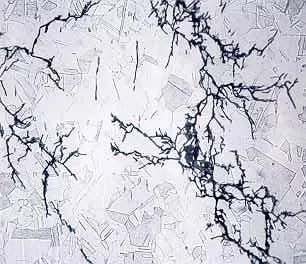
How can stress corrosion cracking be prevented in swimming pool environments?
- Read time: 3 minutes
- Date: 03 Jun 2021
- Sheeting & Cladding
- Flat Roofing
Stainless steel is widely used in many applications because of its resistance to corrosion. However, chlorides in swimming pool environments (caused by pollutants such as sweat mixing with chlorine) can cause a type of corrosion called stress corrosion cracking (SCC). This causes fine cracks in the material and can affect some grades of stainless steel, including austenitic.

How do I prevent stress corrosion cracking from affecting fasteners used in swimming pools?
When specifying fasteners for use in safety-critical applications (such as the building envelope), the durability of the material and potential for corrosion must be considered. To prevent SCC in swimming pools, fasteners manufactured from an HCR (high corrosion resistance) stainless steel must be used.

Fixfast’s HCR self-tapping fasteners are manufactured from grade 1.4529 which has 6-7% molybdenum content which is the highest of the four grades listed above. This offers exceptionally good resistance to chlorine-induced stress corrosion and to local signs of corrosion such as pitting or crevice corrosion.
Why is it important to use fasteners manufactured from the correct grade?
Using fasteners manufactured from the wrong grade of stainless steel can cause catastrophic failure of the structure they are fixing. In 2001, the suspended ceiling of a swimming pool in the Netherlands collapsed due to stress corrosion cracking in the grade 1.4301 (304) stainless steel fasteners. On this occasion, there were no fatalities. But other, well-documented incidences of stress corrosion cracking have resulted in loss of life.
To prevent stress corrosion cracking, HCR fasteners are the only recommended solution for swimming pool environments.

But surely you can see corrosion and just replace affected fixings?
Most people are familiar with the ‘red rust’ that occurs when steel corrodes, so believe that SCC will be easy to spot, but this is not the case. SCC causes fine cracks within the material that are not visible to the naked eye. These cracks can spread quickly leading to the failure of the component.
Furthermore, safety critical fasteners used to secure the building envelope are often inaccessible, making them difficult (if not impossible) to inspect and replace. Therefore, fasteners manufactured from a material such as HCR that can resist SCC must be specified and used.






